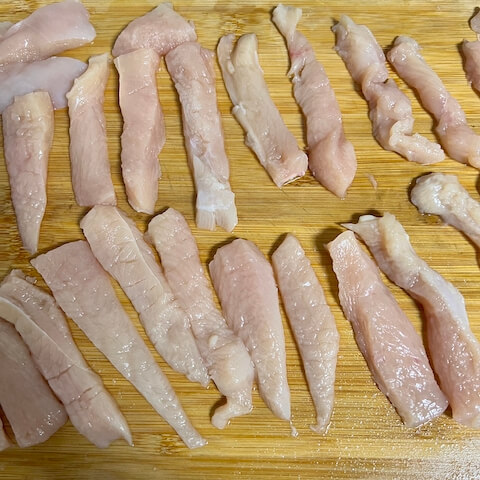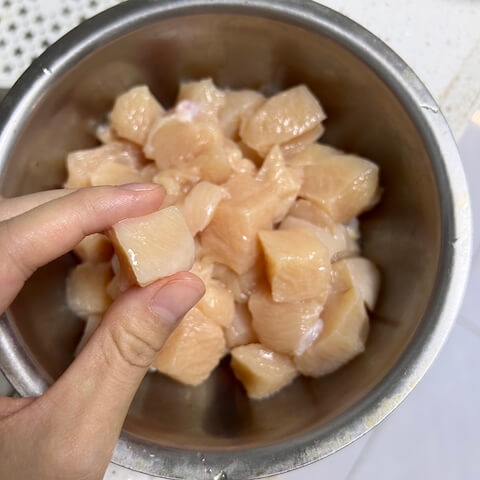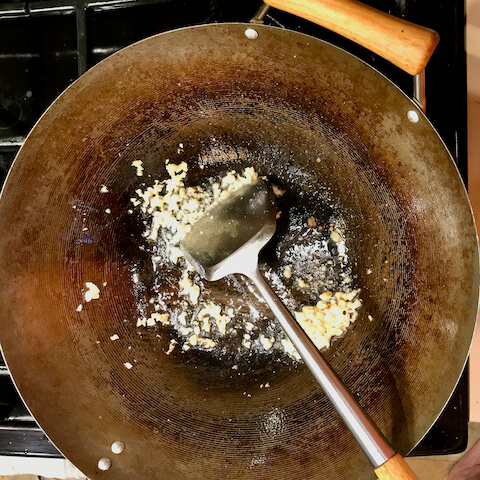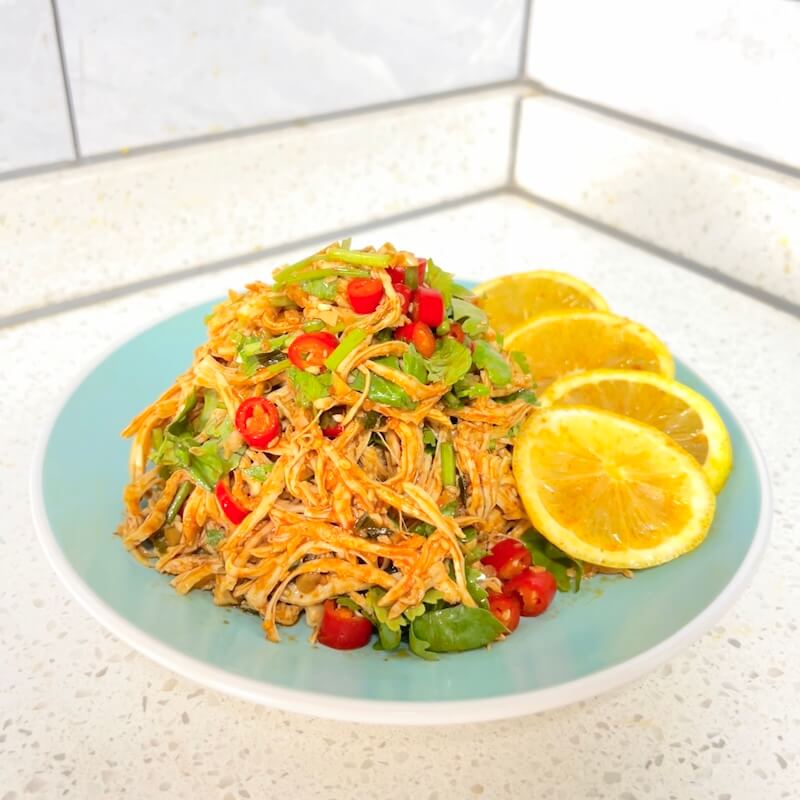In today’s fast-food era, more and more people rely on takeout, fast food, and instant food. Eating takeout for a long time is an unhealthy behavior, but many young people lack the experience of cooking in the kitchen. Do you want to know how to use cooking utensils in the kitchen to cook a dish? When you start with processing the ingredients, you use a knife to cut the ingredients into the shape you want, and then cook them. When you serve the dish on the table, you will be full of a sense of accomplishment. When cooking in the kitchen, you can choose your favorite ingredients and use pure seasonings without additives. With a little bit of work, you can eat healthily. As your cooking skills improve, you can even entertain guests with the dishes you cook.

Please read this article and you will find that cooking is not a difficult thing. You can also do it well. The secret to Chinese cooking lies in four simple stages:
- Study the recipe, gather the ingredients, peel, and wash.
- Use your knife to process and prepare the ingredients for cooking. Organize everything for easy access during cooking.
- Cook the dish. This consists of a few steps, depending on the recipe and cooking technique.
- Arrange the dish for an appetizing presentation and serve.
The first stage in cooking a Chinese dish is gathering and processing ingredients
When we first get a recipe, we need to look at the ingredients and seasoning page in the recipe. Then prepare everything. Peel the ingredients that need to be peeled. Wash the vegetables. Some frozen ingredients, such as meat, need to be thawed first. Some seafood ingredients need to be cleaned, shelled or scaled. If you work with live poultry, the bird must be slaughtered, plucked, and cleaned. Most westerners can skip this part with a trip to the butcher’s department in the grocery store. In short, the first step of cooking is to wash and simply process the ingredients so that the ingredients can be directly processed by knife in the second stage.
The second stage in cooking a Chinese dish is cutting and preparation for cooking
Next, we will cut the food, mix any sauces to be added during cooking, and measure any seasonings. Most knife work is done using an ordinary kitchen knife or vegetable cleaver. Western kitchen knives (or chef’s knives as they are also called) are long and tapered. Chinese chefs use a vegetable cleaver which has a finer blade than a meat cleaver. According to the recipe, we chop the dishes into small pieces. You can cut them into the shape you want; as long as the pieces are of consistent size, they will cook evenly. This is important, because if the pieces are of inconsistent size, the thinner pieces will burn while the thicker pieces are still cooking.
Basic knife skills and consistency in cutting ingredients to size
When chopping ingredients with hard bones such as ribs and pig’s trotters, we use a meat cleaver. The meat cleaver is thicker and heavier than the vegetable cleaver. If you use an ordinary kitchen knife, the probability of the knife being damaged is very high, and the bones will cause great damage to the blade.
In this second stage, we cut all the ingredients that need to be cut. Then we put them on a plate for later use during cooking. Then we clean the cutting board. Before doing any cutting, make sure your knife is razor sharp. This may sound dangerous, but it is safer than using a dull knife. A dull knife requires more force, resulting in bruised, crushed, or mangled ingredients, inconsistent size, and greater risk of slipping.



Some Chinese recipes need to marinate the ingredients after cutting, some fried recipes need a batter to be prepared, and others need a sauce to be mixed for use during cooking. In short, all the preparations before turning on the fire are completed in the first and second stages, so that you can concentrate on cooking in the third stage.
Having everything in place is the key to success in cooking Chinese dishes
In French cuisine, this technique is called “mise en place” but it means the same thing—putting everything in place. When everything is prepared and arranged before cooking, you will avoid having to interrupt your cooking to find or prepare an ingredient.
Having everything in place also includes having a heat proof container handy for pouring off hot oil (if braising, frying, or cooking down fatty meats like pork belly). When deep-frying or dry-blanching in a14-inch wok, filled a third to halfway with oil, that is 4 to 5 cups (950 to 1200 ml) of hot oil that needs to be poured off before the final cooking—a large stainless steel oil storage container or 8-cup (2 liter) Pyrex measuring cup is essential to have nearby. A wire kitchen strainer is also handy, for letting oil drip off the ingredients into the storage container, before final cooking, as this eliminates excess oil from the final product.
Final cooking stages are usually quite fast, so have a suitable serving dish ready
Finally, before cooking, prepare a serving dish for the finished recipe of sufficient size and shape to contain the volume. The final stage of cooking for most dishes is very quick, and you need to have a serving dish ready. Some dishes with a broth or sauce require a platter or bowl with deeper sides than a normal dinner plate. When cooking actual soup, we need to prepare a soup bowl.
For best presentation, avoid using serving dishes of the same color as the ingredients. We try to choose plates or bowls that highlight the colors and contrasts of the ingredients themselves. If the color of the plate is well coordinated with the color of the dish, it will also increase your diners’ appetites.
The third stage is the actual cooking and seasoning
After all the ingredients are prepared, and everything is in place for cooking, we go to the stove. Choose a suitable wok and spatula according to the recipe.
Choose cooking utensils suitable for your wok and the cooking methods required
Usually, home kitchens use spatula-type spatulas. Restaurant kitchens like to use spoon-type spatulas. But when cooking certain dishes, spatulas are used. I used spoon-type spatulas most of the time in school, and about 3-5 times I used spatulas because I needed to turn the fried ingredients to the other side, and spatula-type spatulas are more suitable for this.




Many Chinese recipes, especially stir-fries, use a two-part cooking process
In most Chinese dishes, there are some pre-cooking processes, such as scalding, braising, blanching, and steaming. This brings the ingredients to a certain degree of maturity, so that final cooking can be completed quickly.
After the initial maturing of the ingredients, we first flavor the oil with aromatics such as onion, ginger, and garlic until they are fragrant. This takes only a few seconds and is best done by adding cold oil to a heated pan. This is the base of a dish and gives a dish a unique aroma. Next, we add the main ingredients. If it is a stir-fry over high heat, we use this step to sear the main ingredients, preserving their color and texture without drying them out or overcooking.

If it is necessary to cook the main ingredients for a long time on a low heat, then the other ingredients (such as vegetables) are always added in the middle and late stages of cooking, so they do not break down and lose their texture. We need to add them in order based on how quickly they mature during cooking. Some plant ingredients mature very quickly, so we will add them a little later.
In some dishes, seasoning is done after the main ingredients are added, to let the flavor enter the ingredients. In stir-fry dishes, because the cooking speed is so fast, seasoning is usually done after all the ingredients are heated. After seasoning and stir-frying evenly, we thicken (add starch water) or not. This is to make the broth or sauce thicker, so that it coats the ingredients smoothly and makes the finished dish more appealing.
The fourth stage is finishing and decorative presentation
The fourth step of cooking is a relatively simple step because we did a lot in the third step. Almost all the cooking work on the stove is done in the third step. Of course, some recipes will divide the third step of cooking into several steps for readers to read more easily. If all the operations on the stove are written in one step, some beginners will think that the recipe is too complicated and will be in a hurry during cooking.

The fourth step is to decorate the finished dish, sprinkle some chopped green onions or coriander, if you want to put some beautiful decorations on the side, I think it is a good idea, which will make people more appetizing to this dish. Or after the ingredients are put on the plate, do the last operation, add minced garlic, chili pepper, Sichuan peppercorns on the dish, and use hot oil to drizzle to stimulate the aroma.
After going through these four stages, you can make a complete dish with consistent results every time. We are always discovering new knowledge in cooking. So don’t worry if you don’t do it well at first. Experience makes people grow and improve. As you cook each dish more times, you will be able to adjust and adapt the dishes to your taste. When people eat the same dishes in other places, they will mention your dishes and think that yours is more delicious. Then, you can cook unique delicacies.
Related articles
Do you enjoy My Chinese Home Kitchen?
We enjoy sharing these authentic home recipes with you. My Chinese Home Kitchen is a labor of love.
Please tell your friends about us!
Learn more about My Chinese Home Kitchen at our About page.
Please leave a comment, or SUBSCRIBE to our newsletter.
For more of our original videos, visit My Chinese Home Kitchen on YouTube and Rumble.


